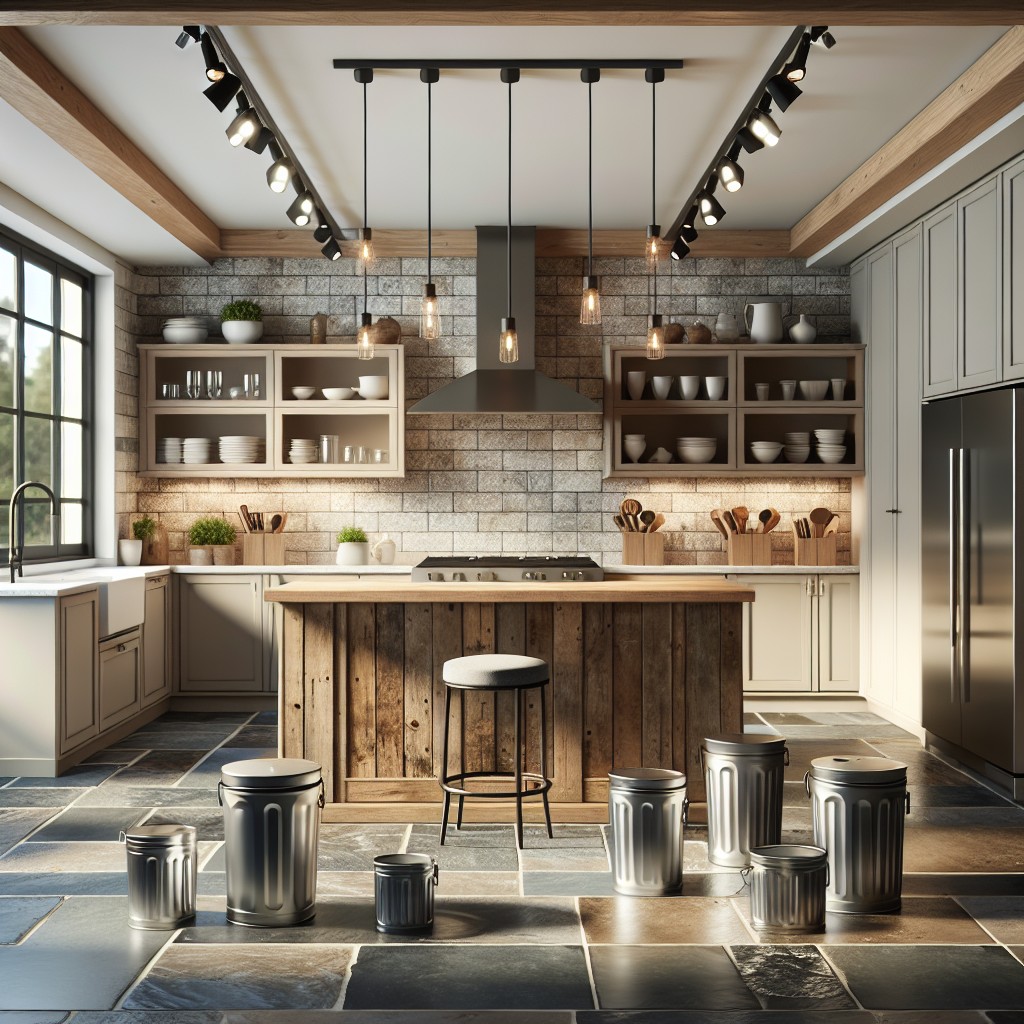Last updated on
In this buying guide, you’ll discover how to choose the perfect trash can size for your kitchen based on your specific needs and available space.
Key takeaways:
- Assess kitchen size and layout for the perfect trash can.
- Estimate trash output based on household size.
- Consider material options for durability and cleanliness.
- Choose the right lid type and odor control features.
- Analyze cost versus capacity for budgeting.
What's Inside
Assessing Kitchen Size and Layout

When you’re on the hunt for the perfect trash can, take a minute to scan your kitchen’s footprint. Cramped space? A slim, rectangular bin might slide effortlessly beside the fridge or into a narrow gap. Large kitchen with a generous island? Consider a heftier receptacle that can stow away more waste and fit neatly at the end of a counter. Always measure the chosen spot’s dimensions—height, width, and depth—to ensure the trash can will nestle in without disrupting the flow or impeding cabinet doors. Remember, the goal is for your trash can to complement your space, not complicate it.
Estimating Trash Output Based On Household Size
A single person or a couple typically generates less waste compared to a family of four or more. For smaller households, a trash can between 7 to 10 gallons should suffice, ensuring you’re not taking the trash out too frequently or dealing with an overly bulky bin.
In contrast, larger families or those who entertain often might consider a 12 to 16-gallon can. This size accommodates a couple of days’ worths of trash, balancing the need for capacity with practical space use.
Remember, city dwellers with daily trash service can afford smaller capacities, while those with less frequent pickups might need to scale up to prevent overflow. Consider this alongside recycling habits; avid recyclers can often manage with a smaller can for non-recyclable waste.
Material Considerations for Durability and Cleanliness
Stainless steel boasts a sleek finish and resists smudges, making it a top choice for those valuing aesthetics alongside functionality. Its non-porous nature means it won’t absorb garbage odors — a quick wipe down with a damp cloth can keep it looking and smelling fresh.
Plastic models, on the other hand, offer a lightweight and often less expensive alternative. They’re easier to maneuver, especially when it comes to emptying, but they may hang onto odors longer and can show wear and tear more readily.
For those leaning towards environmental consciousness, consider cans made from recycled materials. These options contribute to sustainability without sacrificing quality. However, be mindful that they may come with a higher price tag.
If your concern revolves around hygiene, touchless trash cans that operate with motion sensors present a hands-free solution to reduce the spread of germs — paramount in a space like the kitchen where sanitation is key.
In regions where pests are a problem, a can with a secure locking lid can deter critters, adding an extra layer of protection to your kitchen.
Choosing a material for your kitchen trash can isn’t just a practical decision, it is a choice that influences the daily convenience and the overall vibe of your culinary sanctuary.
Lid Types and Odor Control Features
A well-chosen lid can make a world of difference in your kitchen’s aroma and ease of use. Step-on pedals offer hands-free operation, keeping your hands clean when disposing of waste. Touch-top lids require a light press for opening, providing convenience but likely necessitating a free hand. For those who prefer tech-equipped homes, motion sensor lids automatically open when your hand is close, offering the ultimate touchless experience.
Swing-top lids, while easy to use, may not seal odors as effectively. In contrast, locking lids create a tight seal, trapping odors inside and keeping curious pets out. Remember, materials like stainless steel can also help minimize smells thanks to their non-porous nature.
Consider charcoal filters or odor-absorbing bags as additional allies in the fight against unpleasant scents. These are often integrated into the lid or can be attached inside the trash can. Keep in mind, routine cleaning is still the best practice to maintain a fresh kitchen environment.
Analyzing Cost Versus Capacity for Budgeting
When it comes to balancing your budget with the need for a functional kitchen trash can, consider that a higher upfront cost might mean long-term savings. Here are some key points to weigh:
- A larger trash can might seem like a heftier initial investment, but it reduces the frequency of bag changes, saving you on refills.
- Premium materials like stainless steel are more expensive, but they resist odors and are easier to clean, which means less spending on cleaning supplies.
- Features like foot pedals or sensor lids can add to the cost, but they offer convenience and can prevent messes that might otherwise require additional cleaning effort and expense.
- Keep an eye out for warranties and durability promises. A more costly can that’s built to last could outlive several cheaper models, making it more cost-effective over time.
Selecting the right size for your needs and investing in quality can be a smart financial choice that pays off with consistent use.




